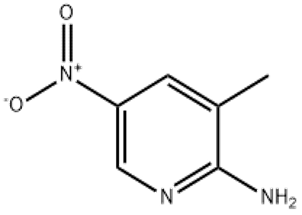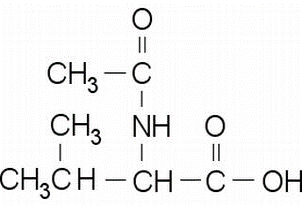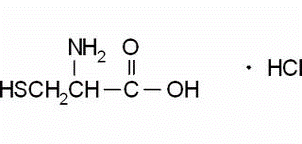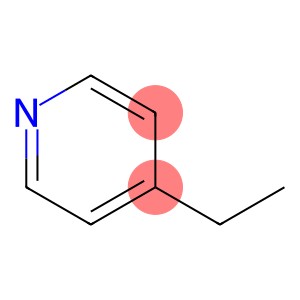2-Amino-3-methyl-5-nitropyridine(CAS# 18344-51-9)
Risk and Safety
| Risk Codes | R36/37/38 – Irritating to eyes, respiratory system and skin. R20/21/22 – Harmful by inhalation, in contact with skin and if swallowed. R41 – Risk of serious damage to eyes R22 – Harmful if swallowed |
| Safety Description | S36/37/39 – Wear suitable protective clothing, gloves and eye/face protection. S26 – In case of contact with eyes, rinse immediately with plenty of water and seek medical advice. S22 – Do not breathe dust. S39 – Wear eye / face protection. S36 – Wear suitable protective clothing. S37 – Wear suitable gloves. |
| UN IDs | UN2811 |
| WGK Germany | 1 |
| HS Code | 29333990 |
| Hazard Class | IRRITANT |
2-Amino-3-methyl-5-nitropyridine(CAS# 18344-51-9) introduction
2-Amino-3-methyl-5-nitropyridine, also known as methylnitropyridine. The following is an introduction to some of the compound’s properties, uses, preparation methods, and safety information:
Quality:
1. Appearance: 2-amino-3-methyl-5-nitropyridine is a white to light yellow crystal or crystalline powder.
3. Solubility: Insoluble in water, but soluble in acidic media.
Use:
1. Chemical reagent: 2-amino-3-methyl-5-nitropyridine can be used as a metal complexation reagent, a catalyst for organic synthesis and an important chemical intermediate.
2. Explosives and gunpowder formulation: This compound has high explosiveness, and it can be used to prepare explosives and gunpowder.
3. Pesticide: 2-amino-3-methyl-5-nitropyridine can be used as an insecticide and herbicide.
Method:
2-Amino-3-methyl-5-nitropyridine can be prepared by:
1. It is obtained by the reaction of pyran molecule and nitric acid under acidic conditions.
2. It is obtained by reacting with formaldehyde while oxidizing ammonium nitrite by using aminopyrrole.
Safety Information:
1. 2-amino-3-methyl-5-nitropyridine has high explosiveness and is a flammable material, so it should be kept away from open flames and heat sources.
2. Dust that comes into contact with the skin and inhales the substance may cause irritation, so avoid skin contact and inhalation of dust during operation, and wear protective gloves and masks.
3. Safe operating procedures should be followed when handling the substance and stored properly to prevent accidents and deterioration. It should be sealed and stored when not in use.








